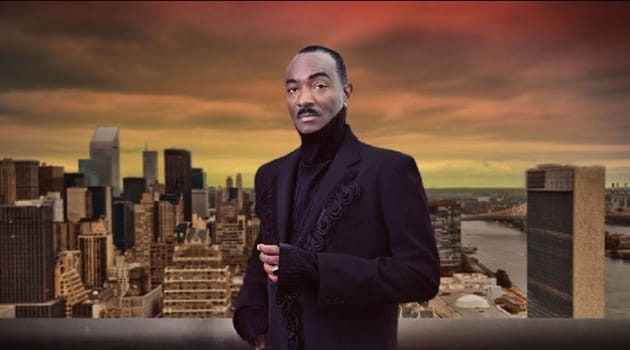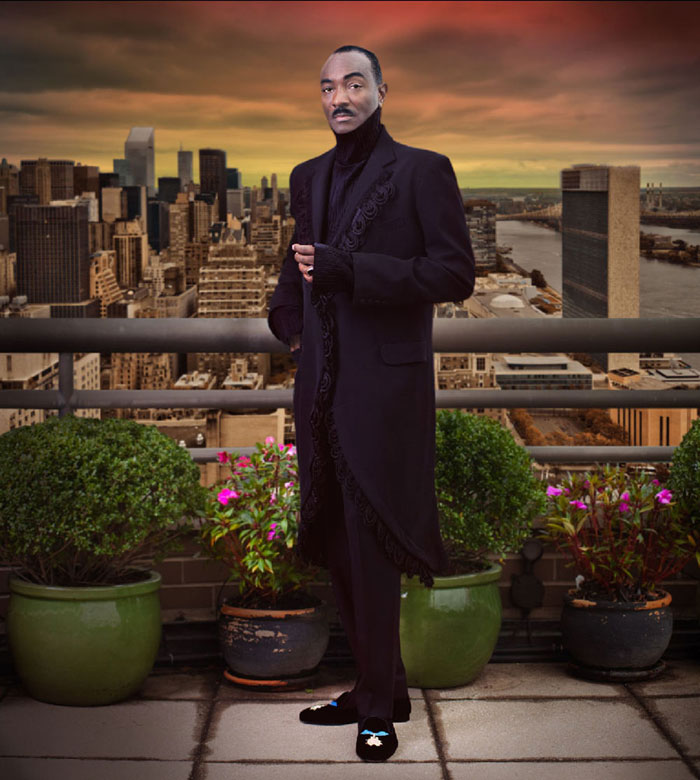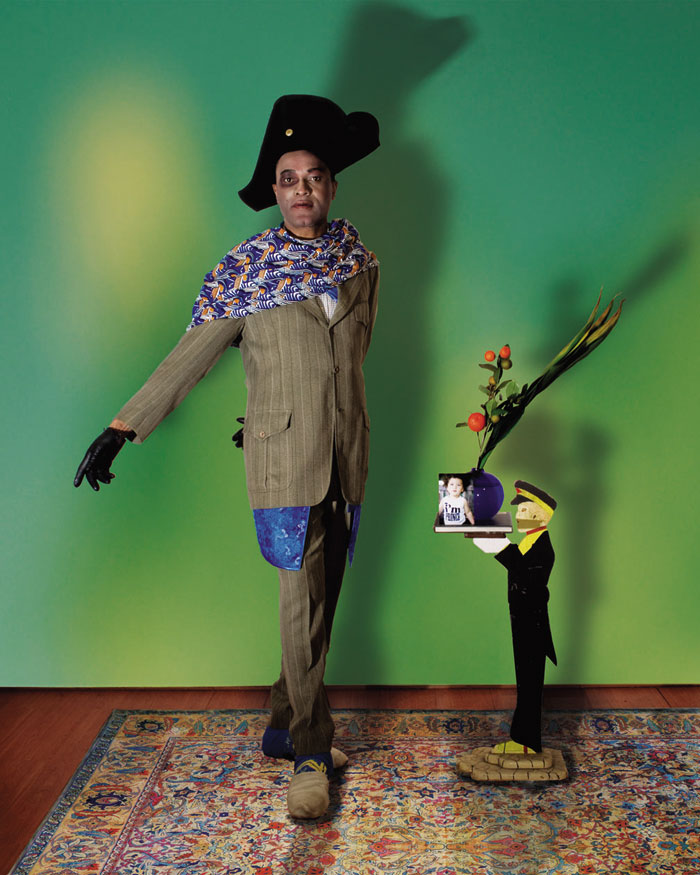Sartorial Anarchy
There is a simmering intensity to Iké Udé’s portraits—which feature subjects ranging from himself, to fashion designer Manolo Blahnik, to financial executive Reggie Van Lee—show a highly stylized world of color, attitude, and object, making their domain as much anarchic as covetable.

Interview by Nozlee Samadzadeh
What do you think about portraiture and self-portraiture as a genre?
My basic philosophy and passion about portraiture is to use the plasticity and framework of art to idealize the imperfect human condition.
How do you approach your portrait subjects?
I simply ask them, or conversely, they simply ask me to execute their portrait. Continue reading ↓
“Self: Photographic Portraits and Sartorial Anarchy” is on view at Stux Gallery through June 25, 2011. All images used with permission, © copyright the artist, all rights reserved.







Interview continued
How do you decide how to dress and arrange your subjects? Describe a photoshoot.
The very nature of this new series, “Sartorial Anarchy”—which is still in its commencement phase—demands a complexity of sartorial elements and their compositional arrangement. This entails a balancing act of disparate sartorial elements across time (centuries) and geography (cultures) on a global scale. In deciding a picture, once I’ve keenly surveyed the various materials at my disposal, I put them completely away and then evoke them in my imagination—evaluating them in my mind’s eye, letting them talk to me in a sort sublime conversation. All these items have their own language, voices, gestures, and innumerable peculiarities, so I let them speak to me, as it were.
To what extent do you plan the objects involved and to what extent are they the natural results of a shoot?
I’m deliberate—rather very, very deliberate—in the composition of my pictures. There are no accidents. I’m in total, measured control. Each and every visual note, quotation, gesture, pose, gaze, atmosphere, color, form, and sartorial element are all accountable. I weigh their place and visual merits in the overall composition of my picture because my overarching approach in making a picture is that of a picture architect.
What do we learn about your subjects, and about yourself, from these photographs?
I don’t intend to teach any specific moral or ethical lessons through my pictures—that isn’t important to me. However, I hope that the viewer gets as much visual pleasure as possible, and is sub-consciously taken into the evident and varied languages that we as humans speak through costumes across time and geography. Regarding my subjects, the viewer can arrive at whatever conclusions he/she allows. My chief aim with my subjects’ portraits is to portray them in the best possible light. One can only conjecture, but it is absolutely false to say that you can see someone’s soul or psychological depth via his/her portrait. This claim or assumption needs to be retired immediately because it is not only cheesy but patently false! Human kind’s gift for deception and psychological complexity and elasticity of appearance is beyond the read of any camera, video, or painting.
How do you reconcile any Nigerian and New Yorker tendencies in your work?
I’ve always fancied myself a world citizen. That is how my parents raised me. That is the fundamental part of my education and my life philosophy. I am at home and very, very at ease with every real or imaginable culture out there—there are no strangers in my universe; all is familiar and most welcomed. And “Sartorial Anarchy” is all about that.
What are you working on now?
I’m constantly researching, contemplating, dreaming, and shopping for more materials to use in composing more pictures for my “Sartorial Anarchy series.” And in between, I’m enjoying doing my new blog, the CHIC INDEX. (See TMN assistant editor Leah Finnegan here—ed.) This blog is perhaps the best thing that has happened to my artistic development. Because of its daily frequency and the sartorial subject matter, it gives me more practice, energy, and passion for my artistic photography than anything before. It is like daily drawing exercises and studies for the perfect pictures later to be executed.
